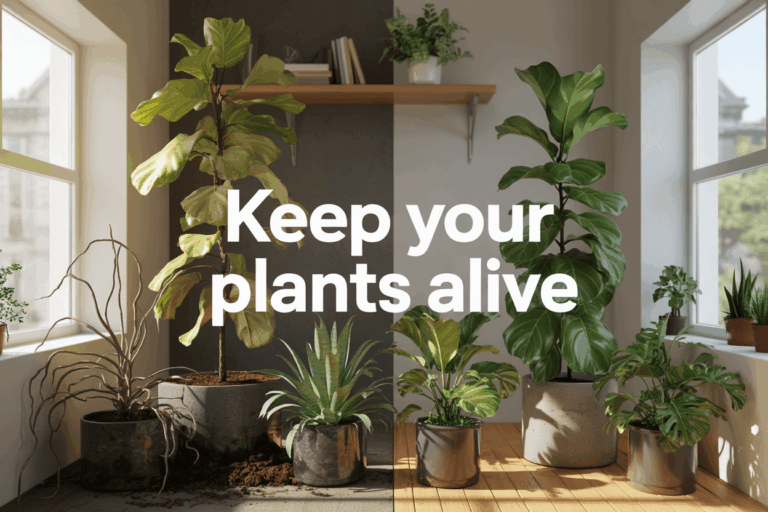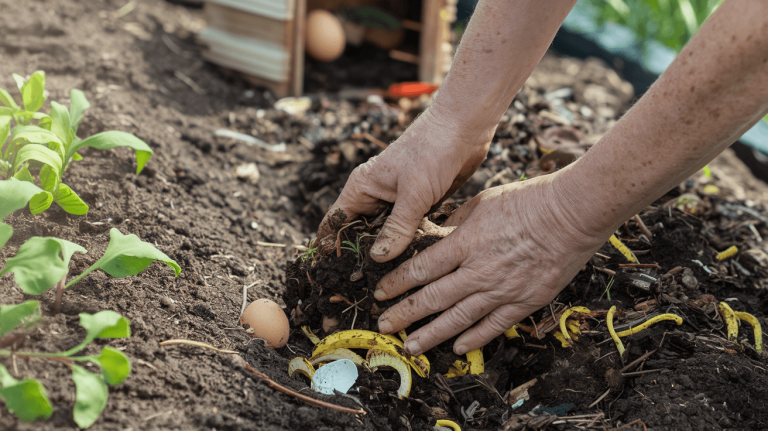5 Surprising Health Benefits of Home Gardening
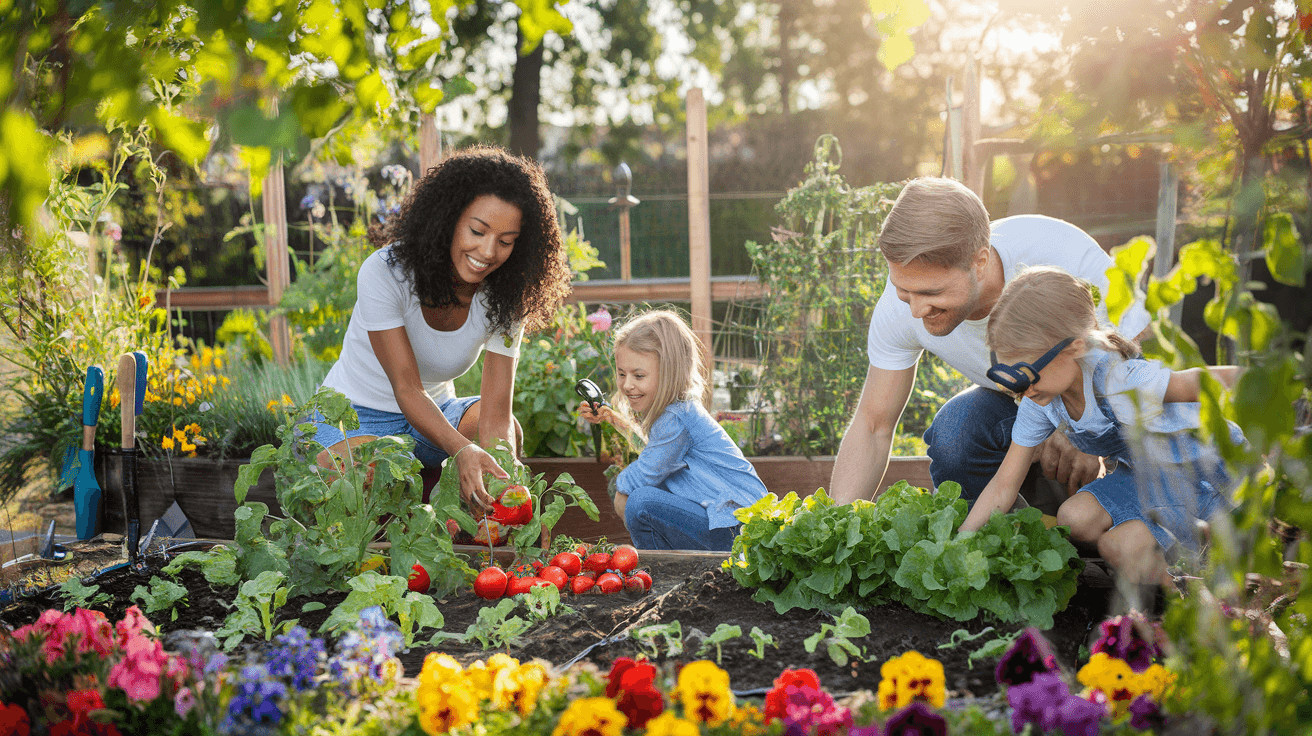
Ever wonder why that neighbor with the vegetable garden always looks so darn happy? Turns out they’re onto something big. Digging in dirt isn’t just about growing tomatoes—it’s secretly boosting their health in ways most people never realize.
I’m about to show you five surprising health benefits of home gardening that might make you rethink that unused corner of your yard.
The evidence is compelling. Home gardening does more than provide fresh produce—it creates a perfect storm of physical activity, stress relief, and nutrient-rich eating that researchers are only beginning to fully understand.
But the most fascinating benefit? It’s the one scientists discovered just last year, and it explains why gardeners seem to age differently than the rest of us.
Physical Fitness Benefits of Home Gardening
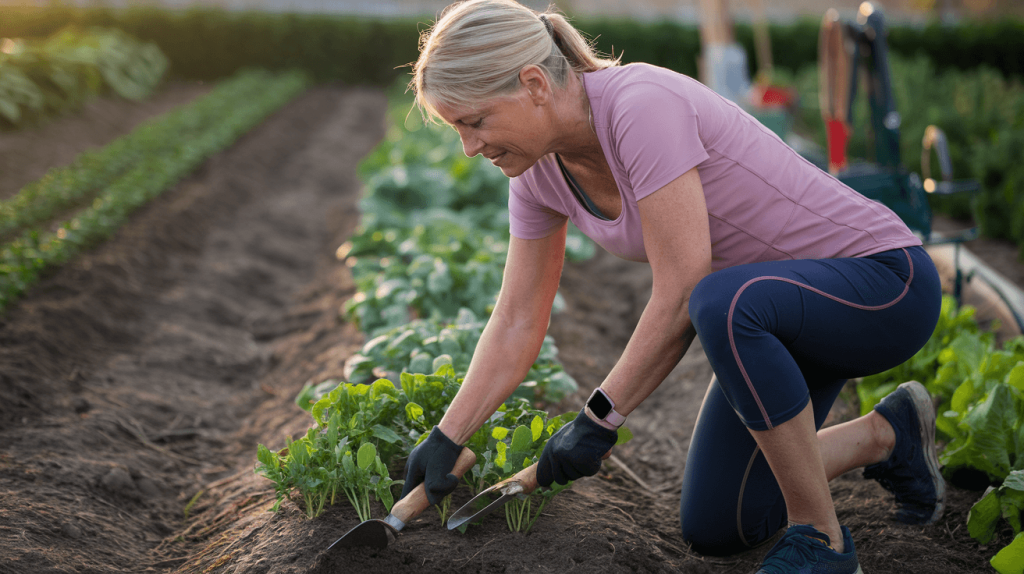
Burns calories without feeling like exercise
Ever noticed how time flies when you’re in the garden? That’s because gardening sneaks exercise into your day without making it feel like a workout. Digging, planting, weeding, and hauling can burn anywhere from 200-400 calories per hour. That’s about the same as a moderate gym session, but way more satisfying!
While hitting the treadmill might feel like torture to many, pulling weeds and turning compost actually gives you something to show for your sweat. You’re not just moving for movement’s sake – you’re creating something beautiful or delicious in the process.
The best part? You don’t need to block out specific “exercise time” in your schedule. Even 30 minutes of gardening a few times a week adds up, and you’ll be so focused on watching your plants grow that you won’t realize you’re getting fitter in the process.
Improves strength and dexterity
Garden work is surprisingly effective at building functional strength. Think about it – digging holes, pushing wheelbarrows, and lifting bags of soil work multiple muscle groups simultaneously. Your arms, shoulders, back, and legs all get in on the action.
What’s unique about gardening is how it builds the kind of strength that actually matters in daily life. This isn’t about bulging biceps that only look good at the beach. It’s about the practical strength that helps you carry groceries, pick up your kids, or move furniture without throwing out your back.
The repetitive fine motor movements involved in gardening – like pruning, transplanting seedlings, or harvesting vegetables – also improve hand dexterity and coordination. These skills become increasingly important as we age, helping maintain independence and reducing the risk of injury.
Enhances flexibility and mobility
Gardening naturally encourages a wide range of motion. You’re constantly bending, stretching, kneeling, and reaching as you tend to your plants. Each of these movements contributes to joint flexibility and overall mobility.
The variety of positions and movements involved works different muscle groups in ways that even structured exercise sometimes misses. You’re stretching in natural, functional ways rather than forcing your body into artificial poses.
For those with joint issues, raised garden beds can reduce the need for kneeling while still providing the mobility benefits. Container gardening on tables or vertical gardening on walls can be adapted to different mobility needs while still delivering physical benefits.
Provides sustainable long-term fitness routine
Unlike intense workout fads that come and go, gardening is a gentle activity you can enjoy throughout your entire life. The sustainable pace means you’re less likely to injure yourself or burn out, making it perfect for long-term fitness.
Many exercise programs fail because they’re boring or feel like a chore. Gardening, on the other hand, offers constant variety and evolving challenges. There’s always something new to plant, a different technique to try, or changing seasons to adapt to.
Gardening also creates a positive feedback loop for fitness. The more you garden, the stronger you get. The stronger you get, the more gardening you can do. Before you know it, you’ve established a fitness routine that will serve you for decades to come.
Mental Health Improvements Through Gardening
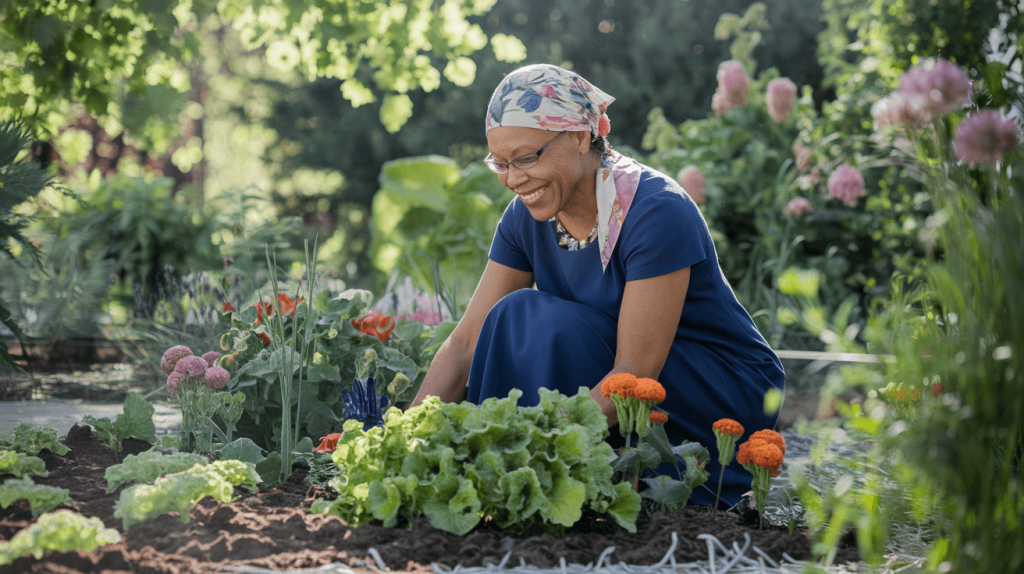
A. Reduces stress and anxiety levels
Ever had one of those days where your mind feels like a browser with 47 tabs open? Gardening might be your reset button. Digging in the soil actually lowers cortisol, your body’s main stress hormone. It’s not just hippie talk – it’s science.
In a 2018 study, participants who spent just 30 minutes gardening experienced significantly lower anxiety levels than those who spent the same time scrolling through social media. The combination of physical activity, fresh air, and disconnecting from digital devices creates the perfect storm for stress relief.
B. Boosts mood through exposure to nature
There’s something almost magical about getting your hands dirty. That connection with nature triggers the release of serotonin and dopamine – yes, the same feel-good chemicals that chocolate activates.
The sunshine factor shouldn’t be overlooked either. Regular exposure to sunlight while gardening helps regulate your body’s production of vitamin D and melatonin, improving your mood and sleep patterns. Just 15 minutes of morning gardening can set a positive tone for your entire day.
C. Creates mindfulness opportunities
Gardening forces you to slow down and be present. When you’re carefully transplanting seedlings or pruning tomato plants, your brain enters a flow state similar to meditation.
Unlike scrolling through Instagram, gardening demands your full attention. You notice the texture of soil between your fingers, the subtle changes in your plants from day to day, the gentle movement of beneficial insects. This natural mindfulness practice trains your brain to stay present in other areas of your life too.
D. Provides sense of purpose and achievement
Growing plants gives you measurable progress you can literally watch unfold. That tiny seed transforming into a flourishing plant provides tangible evidence of your care and effort.
The cycle of planning, planting, nurturing, and harvesting creates built-in milestones that deliver regular doses of accomplishment. Unlike many modern jobs with abstract outcomes, gardening connects you to concrete results you can see, touch, and sometimes eat.
E. Combats symptoms of depression
Gardening isn’t a miracle cure, but research consistently shows it can significantly reduce depression symptoms. The combination of physical activity, creative expression, sensory stimulation, and tangible achievements addresses depression from multiple angles.
A fascinating 2007 study found that certain soil bacteria (Mycobacterium vaccae) actually activate brain cells that produce serotonin. Simply inhaling these microbes while digging may help regulate mood naturally. Plus, growing food gives you a reason to get out of bed on those days when motivation is in short supply.
Immune System Enhancement from Garden Exposure
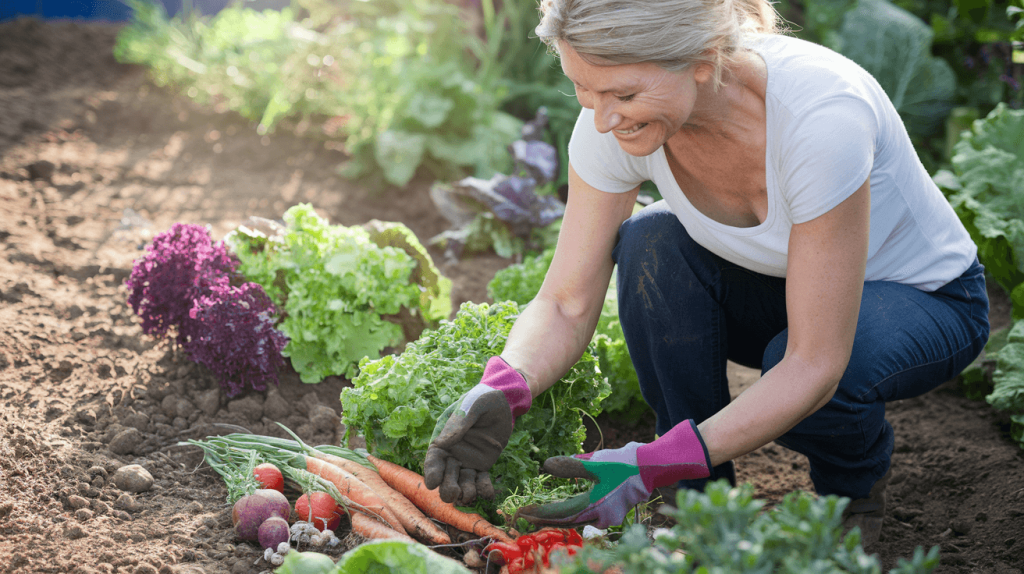
Beneficial soil microbes strengthen immunity
Dirt isn’t just dirt. It’s alive. Every handful of garden soil contains billions of microorganisms that can actually boost your immune system. Crazy, right?
When you dig your hands into soil, you’re exposing yourself to friendly bacteria like Mycobacterium vaccae. This little powerhouse has been shown to increase serotonin production and strengthen immune response. Gardeners who regularly work with soil develop more diverse gut microbiomes than non-gardeners.
Think about it – children who grow up in overly sanitized environments tend to have more allergies and autoimmune issues. That’s because their immune systems never learned to distinguish between real threats and harmless particles.
Working in your garden is like a training camp for your immune cells. They learn, adapt, and get stronger with each exposure.
Increased vitamin D from sunshine
The “sunshine vitamin” is something many of us desperately lack. When you’re tending to your tomatoes or pruning your peppers, you’re soaking up precious vitamin D.
Just 30 minutes of gardening in the morning sun can fulfill up to 50% of your daily vitamin D requirements. This crucial nutrient regulates over 1,000 different genes and directly impacts immune cell function.
Your immune system literally can’t work properly without adequate vitamin D. It helps T-cells (your immune system’s front-line soldiers) activate and respond to threats. Low levels are linked to increased susceptibility to infections and slower recovery times.
Plant compounds boost respiratory health
Plants don’t just sit there looking pretty – they’re pumping out compounds that can improve your breathing.
Many garden plants release phytoncides – antimicrobial volatile compounds that can strengthen respiratory immunity when inhaled. Pine trees, oak, herbs like rosemary and thyme are particularly good producers.
These natural plant chemicals have been shown to increase the number and activity of natural killer cells in your body – specialized white blood cells that destroy infected or cancerous cells.
Gardeners report fewer respiratory infections during cold and flu season compared to non-gardeners. The combination of plant-derived compounds, fresh air, and gentle exercise creates the perfect environment for healthy lungs.
Reduced allergy sensitivity through controlled exposure
Counterintuitive but true – regular exposure to pollen and other potential allergens through gardening can actually make you less allergic over time.
This works through a process similar to allergy immunotherapy. Small, consistent exposures help your immune system recognize these particles as harmless rather than dangerous invaders.
Garden regularly through the seasons and you’ll likely notice your seasonal allergies becoming less severe each year. Your immune system becomes more “educated” about what truly poses a threat.
Start with low-pollen plants if you’re sensitive, and gradually introduce more varieties. Your body will thank you with fewer sneezing fits and itchy eyes down the road.
Nutritional Benefits of Growing Your Own Food
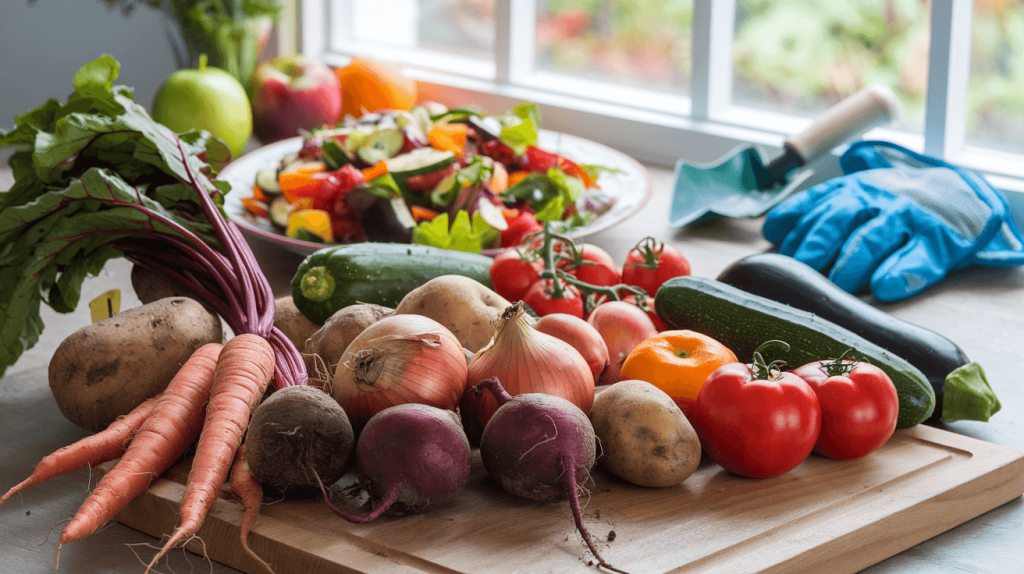
Higher Nutrient Content in Freshly Harvested Produce
Ever noticed how a tomato from your backyard tastes nothing like the store-bought version? That’s not your imagination playing tricks. Home-grown produce packs a serious nutritional punch that supermarket options just can’t match.
When you pluck vegetables straight from your garden, you’re getting them at peak ripeness – the exact moment when their nutrient content is highest. Store produce, meanwhile, is typically harvested before it’s fully ripe and then shipped hundreds or thousands of miles before reaching your plate. During this journey, vital nutrients like vitamin C and antioxidants start breaking down.
Studies show that vegetables begin losing nutrients within 24 hours of harvest. By growing at home, you’re eliminating that long supply chain and getting maximum nutritional benefit with every bite.
Access to Rare Nutrient-Dense Varieties
The grocery store produce section offers a tiny fraction of available vegetable varieties. Most commercial farms grow varieties chosen for uniformity, appearance, and shipping durability – not nutritional content.
Your home garden? That’s where you can go wild with heirloom varieties packed with nutrients you won’t find in standard grocery options:
- Purple carrots with 28x more anthocyanins than orange ones
- Micro-greens with up to 40x more nutrients than mature leaves
- Black tomatoes containing rare antioxidants absent in red varieties
These nutrient powerhouses are rarely found in stores but thrive in backyard gardens.
Encourages Increased Vegetable Consumption
Nothing motivates eating more veggies like watching them grow from seed. When you’ve nurtured plants from tiny sprouts to harvest, you’re way more likely to incorporate them into meals.
Kids who help garden eat nearly double the vegetables of non-gardening peers. There’s something magical about that garden-to-table connection that transforms even reluctant vegetable eaters.
Plus, when you’ve got a bumper crop of zucchini or tomatoes, you’ll find creative ways to use them in everything from breakfast to dessert. Your veggie consumption naturally increases without feeling forced.
Eliminates Harmful Pesticides and Chemicals
Commercial produce is routinely treated with pesticides, herbicides, and fungicides – chemicals designed to kill living organisms. Despite washing, residues often remain.
In your garden, you control exactly what touches your food. Whether you choose completely organic methods or minimal intervention approaches, you’re drastically reducing chemical exposure compared to conventional produce.
This matters because many agricultural chemicals are linked to health issues ranging from hormone disruption to neurological problems. Growing your own food creates a safe haven from these concerns.
Teaches Nutritional Awareness to Family Members
Gardens are living classrooms. As family members participate in growing food, they naturally develop deeper understanding of nutrition and food systems.
Children who garden can identify more vegetables, understand seasons, and grasp concepts like “whole foods” better than non-gardening peers. This nutritional literacy sticks with them for life.
The garden shows in real time how sunshine, water, and soil create the nutrients our bodies need. This tangible connection to food sources fosters appreciation that packaged foods simply can’t replicate.
Social and Community Health Advantages
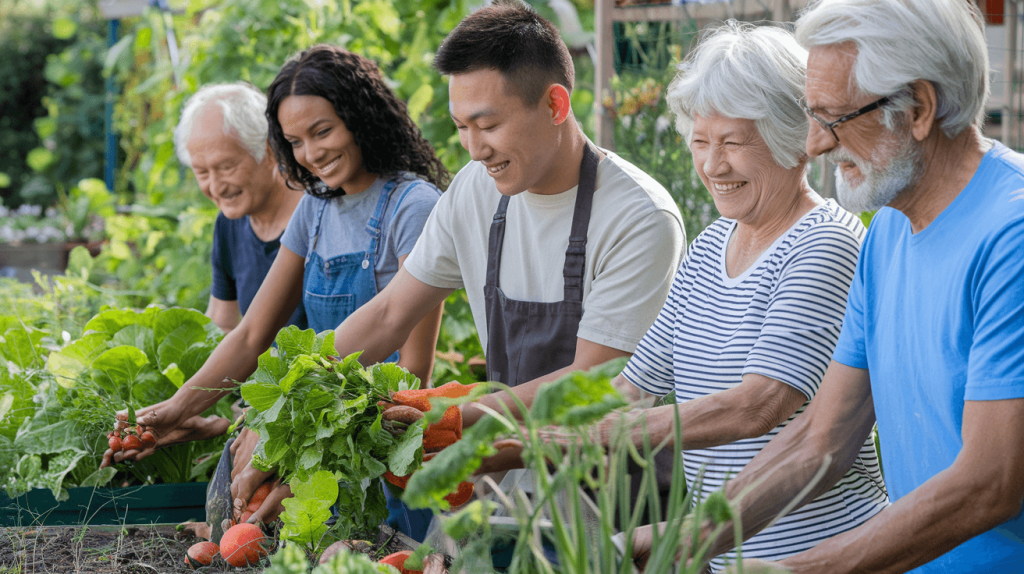
A. Creates family bonding opportunities
Gardening isn’t just about growing plants—it’s an incredible way to grow relationships too. When families get their hands dirty together, something magical happens. The smartphones get put down. Conversations flow naturally. Problems get solved over pruning.
Think about it: how often do you find activities that everyone from your 5-year-old to your teenager actually enjoys? Gardening bridges those age gaps beautifully.
Your kids will remember those Saturday mornings planting tomatoes long after they’ve forgotten about video game scores. There’s something about working toward a common goal—like growing that perfect pumpkin—that creates shared memories and inside jokes.
“My family started having ‘garden dinners’ where we only cook what we grew ourselves,” shares Maria, a mother of three. “Those meals sparked the best conversations we’ve had in years.”
B. Builds neighborhood connections through garden sharing
Remember when people actually knew their neighbors? Garden sharing brings that back—and then some.
Community gardens have exploded in popularity since 2023, with over 35% more neighborhoods creating shared growing spaces. But even without a formal setup, gardens naturally create connection points.
When you grow more zucchini than any family could possibly eat (and you will!), sharing with neighbors becomes inevitable. Those doorstep deliveries often turn into front porch conversations, seed swapping, and eventually, friendships.
Garden sharing also tackles food insecurity in communities. Neighborhoods with active garden sharing programs report up to 15% reductions in grocery expenses for participating families.
C. Provides teaching moments with children
Gardens are living classrooms that teach lessons no iPad app ever could.
Kids who garden develop a natural understanding of science concepts—photosynthesis isn’t just a big word, it’s what makes their sunflowers reach for the sky. Math becomes real when counting seeds, measuring rainfall, or calculating harvest yields.
The patience required can be revolutionary for today’s instant-gratification generation. When a child plants a seed and waits weeks to see results, they’re building delayed gratification muscles that will serve them throughout life.
Most importantly, gardens teach responsibility. That wilted plant won’t revive itself, and children quickly learn that consistent care matters—a lesson that transfers beautifully to other areas of life.
D. Establishes meaningful intergenerational activities
Few activities bridge generational gaps like gardening does.
Grandparents passing down heirloom tomato seeds aren’t just sharing plants—they’re sharing stories, traditions, and wisdom. The garden becomes a place where experience truly matters, and older generations have valuable knowledge to contribute.
For older adults, gardening with younger family members provides purpose and connection. Studies show seniors who garden with grandchildren report 40% higher satisfaction with family relationships than those who don’t.
These connections work both ways. Younger gardeners bring energy, new techniques, and technology to the garden, while older gardeners contribute patience and time-tested knowledge. This knowledge exchange creates a perfect ecosystem of learning that benefits everyone involved.
Cultivating Wellness Through Gardening
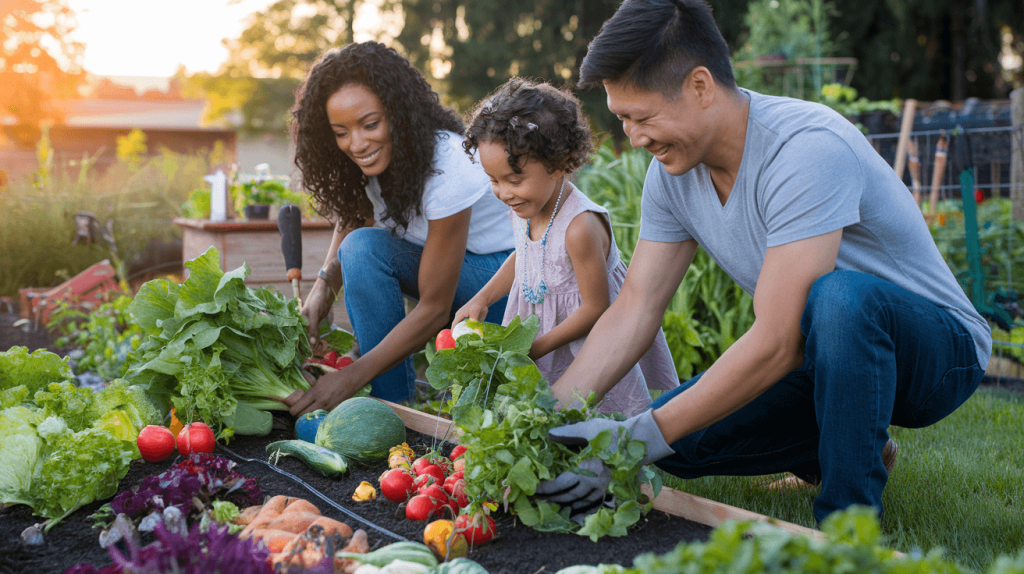
Home gardening offers far more than just beautiful flowers and fresh produce. As we’ve explored, tending to your garden provides a full-body workout, reduces stress and anxiety, strengthens your immune system through beneficial microbe exposure, ensures access to nutrient-rich foods free from commercial pesticides, and creates opportunities for meaningful social connections within your community.
Whether you have acres of land or just a few containers on your balcony, incorporating gardening into your lifestyle can significantly enhance your overall wellbeing. Start small, be patient with the process, and watch as both your plants and health flourish together. Your garden awaits—grab those gloves and experience these remarkable health benefits for yourself.

